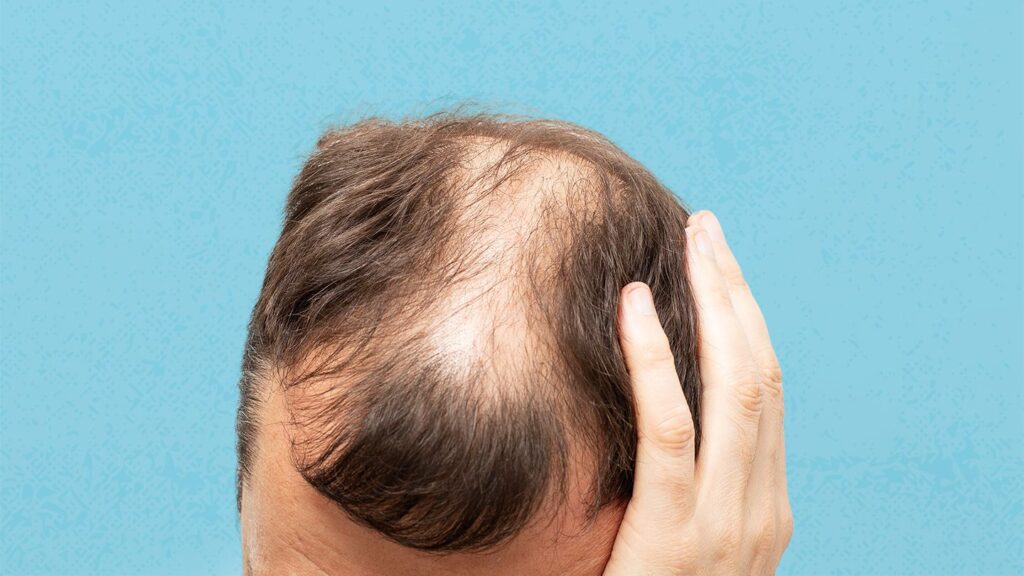Androgenic Alopecia
Androgenic Alopecia: Causes, Symptoms, and Treatments
Androgenic Alopecia, also known as male or female pattern baldness, is a common form of hair loss that affects both men and women. It is characterized by the gradual thinning and receding of hair in a specific pattern, usually at the crown and temples in men and diffuse thinning in women.

Causes:
Androgenic Alopecia is caused by a combination of genetic and hormonal factors. In men, the hormone dihydrotestosterone (DHT) binds to hair follicles and causes them to shrink, eventually leading to hair loss. Women also produce DHT, but to a lesser extent, and other hormonal imbalances can contribute to hair loss in women as well.
Symptoms:
The symptoms of Androgenic Alopecia include:
- Thinning hair on the crown and temples in men
- Diffuse thinning in women
- Receding hairline in men
- Widening part in women
- Miniaturized hair (thinner, shorter, and less pigmented than normal hair)
- Increased shedding of hair
Treatments:
There are several treatments available for Androgenic Alopecia, including:
- Topical treatments: Minoxidil is a topical treatment that can be applied to the scalp to promote hair growth. It is available over-the-counter and in prescription strengths.
- Oral medications: Finasteride is an oral medication that blocks the production of DHT and can be effective in preventing further hair loss and promoting hair growth in men. It is only available by prescription.
- PRP Treatments: Platelet-rich plasma (PRP) is an established, safe, and efficient method for treating hair loss.
- Lifestyle changes: Eating a balanced diet, reducing stress, and avoiding harsh hair treatments can all help to prevent hair loss and promote hair growth.
- Hair transplant: Hair transplant surgery involves taking hair from one area of the scalp and transplanting it to areas of hair loss. It is a surgical procedure and should only be performed by a qualified professional.
It’s important to note that not all treatments work for everyone, and it’s important to consult with a dermatologist or hair loss specialist to determine the best course of treatment for you.
In conclusion, Androgenic Alopecia is a common form of hair loss that can be caused by genetic and hormonal factors. There are several treatments available, including topical treatments, oral medications, PRP Treatments, lifestyle changes and hair transplant surgery. If you are experiencing hair loss, it’s important to consult with a dermatologist or hair loss specialist to determine the best course of treatment for you.
Leave a reply
